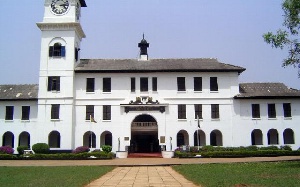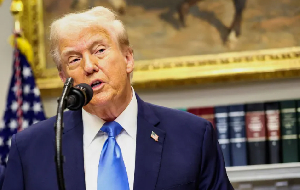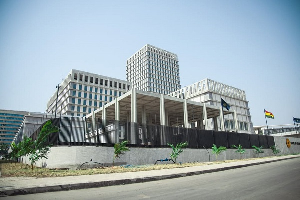Since its founding, Achimota College and School as it was named at the time of its inception, has had a disproportionate influence on the creative arts in Ghana.
In every area of creativity, music, painting, sculpture, literature and theatre, Achimota’s influence has been deep and consistent. This paper seeks to explore the reasons for this phenomenon and to identify some of the main reasons that made these achievements possible. We shall also examine the contemporary nature of this impact.
Colonialism begun in Africa in the final decades of the 19th century when Europeans scrambled for terrritories and took political and military possession of its lands. In India, British rule lasted over two centuries.
In Africa colonialism was expected to last at least as long until Africans absorbed the lessons of pax britanica and learnt to govern themselves. The 1920s was a time of unbridled and unapologetic racism. Accra, the ramshackle capital of the colonized Gold Coast was recently segregated along racial lines.
The goal was political but the official reason was medical. The policy was justified as a necessary measure to save European lives from African diseases by keeping the two races apart, especially at night.
It was generally believed by European medical specialists that Africans were immune to the effects of malaria but that their blood was full of the parasites. The evening was when mosquitoes fed on human blood and transported their contaminated cargo across racial lines to infect Europeans.
On January 28, 1927, the Prince of Wales College and School, Achimota was formally opened. The campus upon which the school stood was segregated. No Africans could stay there overnight without official sanction.
It took the personal intervention of the Governor to obtain permission for Dr. James Kwegyir Aggrey, nominated for the assistant headmaster, to spend a night under the same roof as Rev. Alexander G. Fraser, the headmaster.
African culture was regarded by many Europeans as backward and retrogressive and the African middle class bought into this perception. In 1918, Kobina Sekyi a Cape Coast author and social critic wrote a play called the Blinkards. It was a devastating satire on the nascent African middle class of the 19th century.
Their social ambition was to strip away all identification with their cultural roots and to present themselves as English gentry. It was a cartoonish portrait of delusion and deliberate self-deception. The play warned of the consequences when a society loses its moral compass.
Against the background of these perceptions, the three principal founders had every reason to be proud of their achievement. For one thing, in the tight colonial world they inhabited, they had been accorded the rare honour of a royal visit. The heir to the throne, Edward, the Prince of Wales was himself present to bestow his name on the institution.
The three men, Sir Frederick Gordon Guggisberg, a brigadier in the British Army and Governor of the Gold Coast (1919-1927), Dr. James Kwegyir Aggrey, a native of the Gold Coast, born in Anomabu and educated as a cleric in America, and the Reverend Alexander G. Fraser, a Scotsman and professional educationist were loyal to the crown. They belonged to the liberal and progressive wings of European politics and fervently believed that the key to African emancipation was education.
The institution they created was designed to justify their hopes and ambitions. They saw the visit as the ultimate endorsement of their enlightened beliefs. They gave birth to a school, and let loose ideas that would lead in three short decades to the end of British rule in the Gold Coast.
The school was created to challenge the existing racial conventions and to instill pride in the nations’s putative leaders. Its motto, designed by Dr. Aggrey and displayed boldly on a heraldic shield, was composed of black and white piano keys.
Its message declared that all races are equal and as necessary for civilized harmony as the black and white keys on the piano. At a time when aristocratic and middle-class women in Britain were barred from parliament and other bastions of authority and privilege, the school admitted children of both sexes and educated them together and equally.
In 1924, when African culture was regarded by many Europeans as backward and retrogressive, a Department of Anthropology was established on the campus. It was headed by R.S. Rattray, a noted anthropologist. He was given the responsibility and the means to research Asante culture and to make his conclusions available to the government for policy guidance.
Rattray employed his students as research assistants and undertook field research in the towns and villages around Achimota and beyond. These communities contained demobilized former soldiers from all over the country. The results were published and used to teach local history. The exercise demonstrated the lie that Africans lacked a history.
Achimota was established ten years after one of the most vicious and bloody wars in modern history. The First World War (1914-1918) was ostensibly between European powers but it affected every corner of the globe and did not leave any political institution untouched. The conflict exposed the fragility beneath the pomp and glitter of 19th-century European imperialism. It also demonstrated the need for a new political world order.
The First World War was officially concluded in 1919 by the Treaty of Versailles. The treaty was negotiated by The United States of America the most powerful nation in the world at the end of the war. The United States was led by President Woodrow Wilson, a scholarly politician who introduced radically new ideas of international order.
These were embodied in the newly founded League of Nations. The organization was based on the collective will of all the world’s peoples and rejected international wars as anachronistic solutions to global conflicts. It repudiated colonialism and declared that all people of the world had a right to rule themselves on their own land.
These ideas no doubt inspired the founders of Achimota and were distilled into the images on the school’s shield. The decades after the end of the First World War in 1919 saw the emergence of fresh ideas and concepts in the arts and education.
American troops including African American soldiers took jazz into Europe and changed European music forever. They inspired avant-garde European creativity and influenced its giants.
The new appreciation for African art was not confined to artists’ studios or music halls. It entered academia. Art schools begun to apply its principles to educate new generations of students. When Achimota was founded, this new interest in African art and its principles influenced and shaped the school’s program.
Achimota was created not only to train young African minds to cope with a colonial world dominated by Europeans values. They were also educated to understand and appreciate the African world that they expected to lead one day.
They were consistently exposed to traditional culture and encouraged to associate it with modernity. African culture was introduced to the students not only through the academic curriculum but it was also inserted into their daily activities. They were encouraged to wear traditional attire at every appropriate opportunity.
The students were taught traditional dances and music and used them for entertainment as well as to salute formal occasions. These lessons helped them in later life when they assumed leadership positions in the country. Achimota equipped them to transcend their tribal niches and to embrace the nation as one.
The radical invention of Achimota since the 1920s was the deliberate insertion of African art and culture into the consciousness of its students. This was done to create a focus for them and to constantly remind them of their responsibility to their people. Among the first art teachers was the Hungarian, Eva Meyerowitz.
She was passionate about traditional African art and insisted that her students respect and study this art form and explore it in their works. Kofi Antubam and Saka Acquaye (1923-2007) were amongst her students and they carried these perspectives into their professional careers. Both of them became famous and prolific artists who left a lasting influence on the creative industry in the country.
Nkrumah and the Creative Industry
One of the students of Achimota who absorbed the lessons of the creative culture and applied it to change the country when he had the opportunity to do so was Kwame Nkrumah. He was an ardent Pan Africanist, an intellectual and a visionary who became the country’s first African ruler. In that role, he had control over its abundant resources.
He had an overwhelming influence on the creative arts which he saw as valuable assets in his struggle to give Ghanaians a sense of nationhood and to realize his Pan African ambitions. He belonged to that generation of African nationalists that included Leopold Senghor, and Julius Nyerere. They viewed their countries struggle for emancipation as more than political but also as profoundly cultural and transformational.
They wanted not only a new nation but also one inhabited by a people who were conscious of their heritage and proud to use it to move forward. Kwame Nkrumah commissioned works from leading artists like Kofi Antubam, Saka Acquaye, Dr. Oku Ampofo, Philip Gbeho (who composed the national anthem), and Ephraim Amu (who was responsible for the popular anthem “Yen ara ya Asase ni”).
He worked hard to encourage the development of highlife as the country’s contribution to African popular music. According to the late Stan Plange and John Collins, early in the 1950s Nkrumah saw the potential for highlife to become a distinctly Ghanaian brand when he visited Liberia and Nigeria.
He was entertained at official functions by the police and army bands and sometimes by ballroom orchestras consisting of Lebanese and Syrian musicians. However, there were already African orchestras in Accra, Kumasi and Takoradi playing the increasingly popular highlife. He made a point of travelling with one or two Ghanaian bands when he visited other African countries.
They were tremendously successful and were acclaimed by African audiences. E. T Mensah who later gained fame as the leader of the Tempos band had accompanied him on one such trip. He was so popular in Nigeria he lived there for a few years and became one of the founders of Nigerian highlife.
Nkrumah encouraged the fusion of highlife and the so-called guitar band music. Under his patronage, several bands were created and supported by the State and they contributed significantly to the creative industry. Amongst them were state-sponsored bands like the Workers Brigade Band and the Farmers Brigade Band.
Each produced works that enhanced the repertoire of highlife music and created material for other bands. Famous musicians like Nana Ampadu who wrote songs like “Ebi ti yie” and later on “Agatha” developed their talents in the Workers Brigade band. He went on to found other bands. It was during this period that the first generation of state hotels were built.
Every major city or town had one. These included the Ambassador Hotel in Accra, The Meridian Hotel in Tema, City Hotel in Kumasi, and Atlantic Hotel in Takoradi. Each hotel employed a house band. This fostered employment in the music industry and deepened the pool of talent. Many popular dance bands flourished as a result of the state’s encouragement and patronage.
They include the Ramblers Band led by Jerry Hansen, the Tempos Band led by E. T. Mensah (1919-1996), the Black Beats Band led by King Bruce (1922-1997), the Comets led by Teddy Osei (1937), the Broadway Band later renamed the Uhuru Band under Stan Plange and the Stargazers led by Glen Coffie and later Eddie Quansah.
Nkrumah also revolutionized the fashion industry in the 1950s. He promoted and popularized the wearing of traditional attires. This was an important initiative to counter the so-called “colonial mentality” satirized by Kobina Sekyi in the Blinkards.
This mentality flourished at a period when many young men and women were scrambling to join the urban workforce. They believed that their chance of employment in the colonial white collar market would be enhanced by repudiating “native” habits and clothing. It became fashionable for some of the youth to pretend ignorance of their own language or to speak it with a strangulated British accent.
Nkrumah made traditional attire fashionable by insisting that his ministers wear kente cloth or the batakari of northern Ghana for official functions. At state banquets, ladies were encouraged to dress in elegantly cut cloth.
They influenced the country’s fashions and helped to establish the lucrative fashion industries. According to Professor Kofi Baku of Legon University, Nkrumah’s adoption and popularizations of the batakari was also part of his strategy to acquire the electoral advantage of voters from the northern region by identifying with them.
Professor Ivan Addae-Mensah, himself an Akora and a keen student of Ghanaian development under Nkrumah, claims that the president’s experiences in Achimota demonstrated to him how the consistent use of traditional attire could instill a common identity in young people of various ethnic and class backgrounds.
The radical practice of transforming traditional attire into a regular part of a school uniform spread to other secondary schools and became part of a national consensus.
The triumph of this policy is that today, Ghanaian fabric made by GTP, Printex and ATL is being used more often for men and women’s daily wear and we recognize every Friday as a traditional dress day across the nation.
Nkrumah founded the Young Pioneers Movement to channel the energies of young people into socially productive enterprises. It was based on the Boy Scouts and the Girl Guide movement.
Several practices from Achimota were adopted and incorporated into their training e.g. traditional music and dance, theatre, storytelling, and literature. The movement also contributed to local tourism by visiting various parts of the nation.
Ephraim Amu and the Significance of Music in Achimota
Ephraim Amu was one of the first music masters in the school. He joined the staff in 1934-1949. He was a prolific composer and choirmaster. His works were introduced into the curriculum and provided the soundtrack for life in the school and in later years for the nation as well.
Ephraim Amu was not technically a student at Achimota but he taught music in the school for 15 years and was associated with it. He organized choir competitions for the students and wrote the music for them.
He was a brilliant composer who specialized in choral music. He used his craft to educate the students on African values. He also originated the traditional entertainment known as tribal drumming which gathered the students in their ethnic groups to study, sing and dance their tribal culture.
Much of his choral music has passed on to become part of the repertoire of the nation’s heritage and are sang in all parts of the country. Ephraim Amu deliberately crafted his music to spread the Christian faith in simple uncomplicated language.
He also wrote lyrics in Asante Twi, Fanti, Ewe and Ga. He chose these languages to help his countrymen and women to bridge the gulf of incomprehension caused by to their ignorance of other Ghanaian languages. He wrote this music to be accompanied by African instruments like the atentenben and the simple drum.
These instruments came in vast regional variations and by studying how to play them, the students gained additional understanding of Ghanaian culture. Amu was very prolific in his compositions and he wittily combined African proverbs to deliver his Christian message. This was radical at a time when the two cultures were consistently portrayed as incompatible and uncomplimentary.
Music was a huge subject in the teaching of the creative arts in Achimota. It was employed for more than scholarly reasons but also for entertainment and religious rites.
The founders of the school recognized the importance of music in the social life of African people and made sure that the subject occupied a similar role in the curriculum of the school. Achimota was unlike other secondary schools in the fact that it was secular. Music was not primarily a vehicle for religious practice but could be used for a great variety of objectives.
Achimota contributed several important musicians to Ghanaian popular music. They include King Bruce (Black Beats), Jerry Hansen (Ramblers), Kofi Ghanaba (Tempos and African Jazz).
Achimotans are still active on the creative side of pop music. Rocky Rockstone and Richie to name only two who are producers and recording artists turning out hits for young consumers.
In the classical arena are Ken Kafui, Kofi Agawu, Eric Akrofi, George Francois, Emmanuel Gyimah Labi, and William Chapman Nyaho have and continue to distinguish themselves locally and internationally.
Amu used his music not only to illustrate the essence of the famous black and white piano keys of the school’s motto but also to teach the universal inheritance of Africans.
He succeeded brilliantly. Thanks to his composition and the subsequent works of people like Akora Dinah Reindorf, the distinguished musician, music educationist, pianist and composer, and one time conductor of the National Symphony Orchestra, Amu’s works are widely known across the nation and act as a glue to national cohesion.
Kofi Antubam and the Visual Artists
Kofi Antubam was one of the most influential visual artists of his generation. He was the Head of the Arts Department at Achimota and influenced the education of dozens of young artists. Like many African artists and intellectuals of his generation, Antubam was very sensitive to the challenges posed to African culture by European cultural imperialism. He wrote a book on Akan arts and culture and encouraged his students to study indigenous life, especially in the rural areas and use it in their works.
He was a contemporary of Kwame Nkrumah whose Pan-Africanist ideas he fully shared. He was commissioned by the state to execute many important works including the national mace for parliament, the sword of state for swearing in the president and the national throne.
He was a prolific painter whose works were collected by the state to decorate embassies abroad. Two of his masterpieces could be seen on display in Accra. One is on the front of the Community Center. It shows a group of men in traditional attire. The work extolled peaceful co-existence in the nation. The original copy of his other public masterpiece was unfortunately destroyed.
It was commissioned for the grand lobby of the nation’s first international hotel, the Ambassador. The hotel was abandoned after several years of service and was sold when the Ghanaian economy collapsed in the 1970s. The painting was carefully copied and reproduced for the ballroom of new Ambassador Hotel, now renovated as the Mövenpick Hotel.
It shows a series of uniquely Ghanaian scenes including a chief holding court; a scene in a village market; farmers cultivating their field and a small industrial park.
These were the usual topics favoured by Antubam in the 50s and the early 60s. They showed indigenous landscapes, painted in bright inspirational colours and designed to uplift the viewer.
Antubam influenced artists as diverse as Ato Delaquis who took the style to new heights and Professor Ablade Glover, a noted painter who created the most successful gallery in the nation.
Antubam and his colleagues like Asihene and Bartimeus chronicled rural life in the country. His choice of traditional themes, the simplicity of line and exuberant colors won him lots of attention and admirers. His work and style were so popular they were copied widely.
It became an established and easily recognizable style and formed the basis for commercial art in the late fifties and early sixties. Like stained glass windows in Medieval churches, Antubam’s art both educated and entertained.
In an era when the majority of the population was illiterate and responded more readily to visual signs than the written word, trotro lorries, chop bars, street side fashion shops and barber shops advertised their services by employing commercial artists and sign writers to decorate their shop fronts with images inspired by Antubam’s artistry. The ease with which the style was reproduced provided material for collectors.
Eventually, the style pioneered by Antubam and his fellow visual artists became the standard gifts for departing managers of European enterprises. They also helped to establish the arts market for tourists and other local collectors.
Today the memory of Kofi Antubam and his disciples is being kept alive by galleries like the Loom, owned and curated by Akora Mrs. Francis Ademola. Her gallery, the Loom, is one of the first and continuously functioning art galleries in the nation.
Achimota and Creative Writing
Achimota produced some of the finest writers for the country’s growing literary culture. It was observed by Historian, Dr. Kofi Baku that it is a tribute to the holistic nature of Achimotan education that in the days when these writers were trained in Achimota, there were few books written by Africans on Africa for Africans. Most of the books were by English or American authors and dealt with events far from Africa.
Despite the Eurocentric focus of this programme the school managed to produce many critical and incisive commentators on the African reality. The list of writers spawned by Achimota include the ubiquitous Kwame Nkrumah, Ayi Kwei Armah, Kofi Awoonor and the Nigerian writer Cyprian Ekwensi.
Coincidentally other writers produced by the creative arts at that period include non-Achimotans like Efua Sutherland, Kwesi Brew, Atukwei Okine, Ama Ata Adu. They were part of a generation of African intellectuals who were weaned on the intoxicating dreams of African Liberation in the 1950s and 60s.
As young adults they witnessed the struggle for independence by many African people. They were imbued with the thoughts and ideas of revolutionary leaders like Kwame Nkrumah, Augustine Neto, Jomo Kenyatta, Joseph Savimbi, Nelson Mandela, Ben Bella & Patrice Lumumba. Apart from Kwame Nkrumah, these names were barely known by the majority of their contemporaries. Their loyalty to the cause of African Liberation was rewarded when these nations begun to win their freedom.
On liberation days the Union Jacks and the French and Belgian tricolours descended from flagpoles to be replaced by the brilliantly optimistic flags of new African states.
After the briefest interludes the era of colonial struggles ended and they begun to see on their cinema screens the same cities in flames from the same countries. The revolutions had started to devour their children.
They watched as former guerrilla fighters now turned presidents looted their nations’ wealth with the help of their families and cronies. Often they first sacrificed their erstwhile comrades in arms by executing them publicly. They next turned upon their writers and other critical voices. The flags lost their optimistic exuberance as the nations sank into anarchy, coup d’etats, and civil war.
That is when the applause stopped.
The artists paid a heavy price for being witnesses. Those who spoke out were silenced. Some were assassinated, many were chased into exile or were imprisoned. One of Ghana’s greatest thinkers, Kofi Awoonor was shot in a war in which he had neither interest nor a role.
He was just passing through the country. His executioners did not know him. Others like Efua Sutherland, Ama Ata Adu, Atukwei Okine and Kofi Anyidoho stayed and lived on almost as an act of defiance. They survived against the odds.
Ayi Kwei Armah came home from studying and working abroad. He wrote the book that summed up the betrayals of the generation’s hopes and the soul-crushing disillusion of the era. It is called “The beautiful ones are not yet born”. He left the country in disgust. He now lives in self-imposed exile in Senegal.
Like a character out of a Greek tragedy, the inescapable Kwame Nkrumah left large footprints on the literary landscape of the epoch. He played many roles and in each, he tested the limits of the country’s creative tissues. He began as one of the founding students at Achimota in the late 1920s.
He went to America to study divinities then he got involved in Pan-African circles and eventually returned to the Gold Coast. He became the leader of a revolutionary party which went on to seize the nation’s freedom from the British. He emerged as president of the new nation. He was covered with glory but also increasingly with hubris.
A few years later he had his name on coins and effigy on stamps. He became increasingly oppressive. His erstwhile comrades in arms rose against him and he eliminated them.
He was a brilliant writer and wrote about being betrayed by those he trusted. Eventually, he lost his hold on the favour of the gods and was driven into exile. He died in a foreign land alone but not forgotten. The last irony of his brilliant tragedy was being brought home by the people who had rejected him to be given a funeral fit for a king.
Today, there is a new crop of Achimotans being recognized for their creative writing. The poet Nii Ayi Parkes is one of the leaders of their group. I had the pleasure of meeting three last year when I was the guest speaker at the Burt Award for African Literature. The Burt Award for African Literature is a literary prize that recognizes excellence in young adult fiction from Ethiopia, Ghana, Kenya, and Tanzania.
Achimota in the 21st century
We are on the threshold of a new world. Achimota now faces a new world dominated by rampant technology. A new world of unknown borders, virtual reality, and multiple identities.
We shall need new guides to track our way in these new lands of fragmented realities. Fortunately, several Akoras have led the way and broken the path for us. Dr. Victor Lawrence was inducted into the Inventors Hall of Fame of the United States in 2016. In the last 30years, Victor Lawrence has made a significant impact on the global telecommunications industry.
His pioneering work has paved the way for developments in broadband, DSL, HDTV technologies and wireless data transfer. Additionally, his advancements in modern technology and international standards have had a global impact allowing for interoperability of computer networks across the globe.
I wish to acknowledge the following people whose help and encouragement made this paper possible. First, I want to thank my sister Korkor Amarteifio, who in my estimation has done more for the creative arts in our generation than anybody else I know through cultural advocacy, artistic productions and her unstinting support and encouragement for young artists throughout the land.
I want to thank my friends Professor Kofi Baku and Professor Ivan Addae Mensah for their intelligent and incisive advice and comments on the historical aspects of the paper.
Opinions of Monday, 27 November 2017
Columnist: Nat Nuno-Amarteifio















